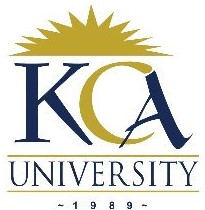
UNIVERSITY EXAMINATIONS: 2017/2018
EXAMINATION FOR THE DEGREE OF BACHELOR OF SCIENCE IN
INFORMATION TECHNOLOGY/ BACHELOR OF BUSINESS IN
INFORMATION TECHNOLOGY/ BACHELOR OF SCIENCE IN
APPLIED COMPUTING
BIT1111 KCAU100 INFORMATION LITERACY
FULL TIME/PART TIME/DISTANCE LEARNING
DATE: APRIL, 2018 TIME: 1 HOUR
INSTRUCTIONS: Answer Question One & ANY OTHER TWO questions.
QUESTION ONE
a) Using your knowledge on referencing, consider the list of information resources below and
prepare a comprehensive REFERENCE list using the APA method (15 Marks)
i) Security in computing By: Charles P. Pfleeger. 1997. Prentice Hall. New Jersey NJ
07458. Second edition.
ii) Labor supply and weight. By Dr. Darius Lakdawalla and Prof. Tomas Philipson. The
Journal of Human Resources. Volume 42, Issue 1. Winter 2007. Page 85 to page 116.
iii) The essence of expert systems. By Keith Darlington. 2000. Prentice Hall. London.
iv) Simulation with arena. Third edition. By W. David Kelton, Randall P. Sadowski and
David T. Sturrock. 2004 by McGraw Hill Publishers. Boston.
v) Opportunities for Micro and Small Scale Businesses in the Tourism sector. By
Patience M. Mshenga and George Owuor. KCA Journal of Business Management.
Volume 2, Issue 2. 2009. Page 52 to page 68.
QUESTION TWO
Discuss five ways through which you as a student taking an academic program at the Faculty of
Computing and Information Management will benefit from information literacy. (10 Marks)
QUESTION THREE
a) Identify and briefly explain four ways of evaluating sources of information for academics.
(4 Marks)
b) With two examples for each, distinguish Primary and Secondary sources of information.
(6 Marks)
QUESTION FOUR
You have been presented with an information task that reads as follows: “Discuss the reliability
and integrity of database security in computing.” Giving reasons for your choices identify at least
four possible sources of information for this task. (10 Marks)
QUESTION FIVE
a) One of the start points for information retrieval is a Library’s OPAC. What is OPAC?
Identify three uses of OPAC (5 Marks)
b) Differentiate a direct citation from a paraphrased citation. (2 Marks)
c) Briefly discuss how Boolean operators help in information searching. (3 Marks)
